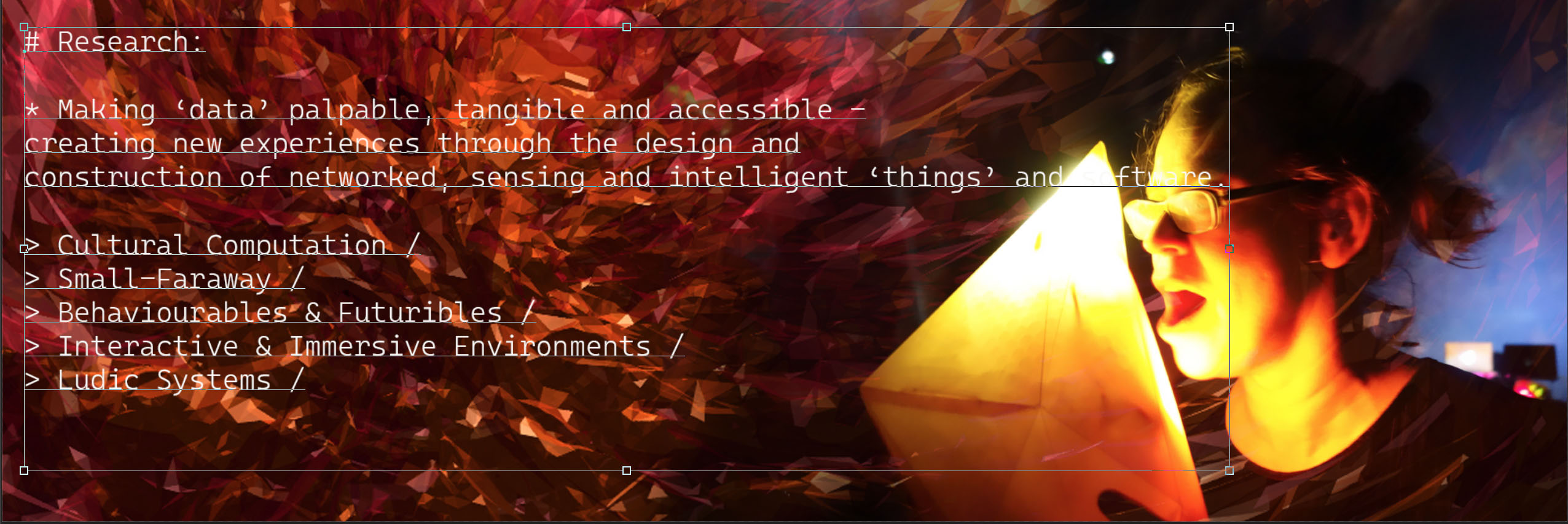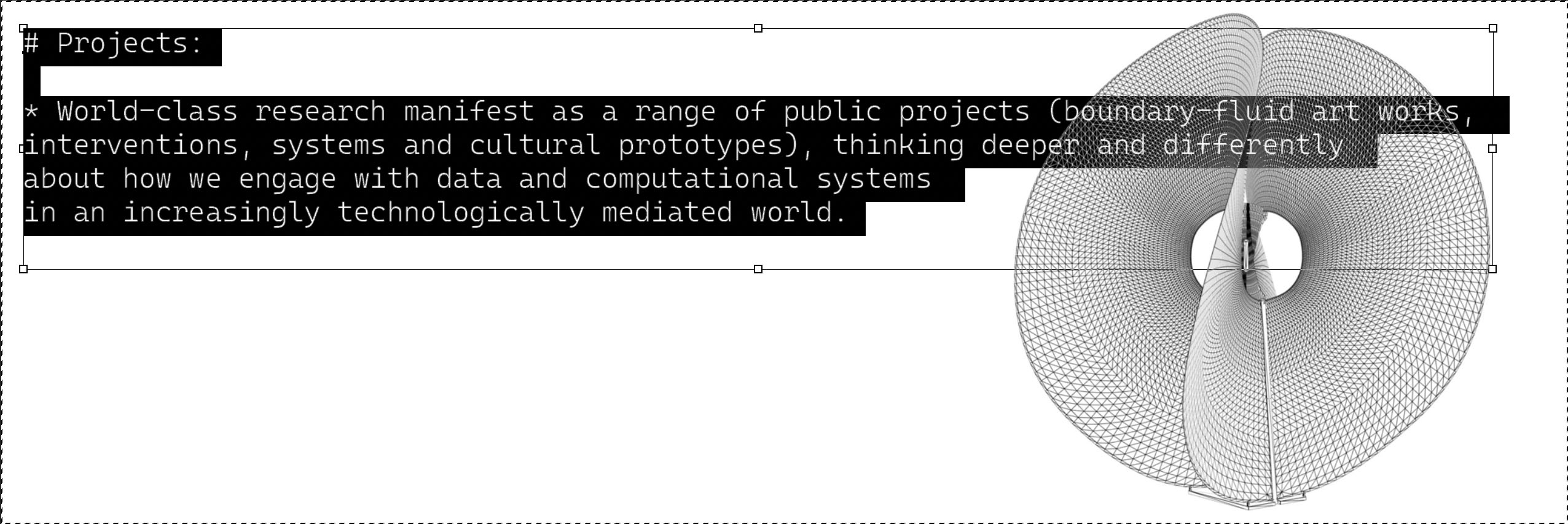:(){ :|:& };: ascii forkbomb /
Jaromil /
2002 /

“Arguably the most elegant forkbomb ever written, has become a secret code of recognition among hackers.“
Prof. Florian Cramer
The code :(){ :|:& };: provides arguably one of the most elegant examples of a fork bomb.
It was presented as a free and open source piece of net:art in 2002, along with a text titled la bohème digitale.
From the Wikipedia article Fork_bomb
In computing, the fork bomb, a form of denial-of-service attack against a computer system, implements the fork operation (or equivalent functionality) whereby a running process can create another running process. Fork bombs count as wabbits: they typically do not spread as worms or viruses. To incapacitate a system they rely on the assumption that the number of programs and processes which may execute simultaneously on a computer has a limit.
A fork bomb works by creating a large number of processes very quickly in order to saturate the available space in the list of processes kept by the computer’s operating system. If the process table becomes saturated, no new programs may start until another process terminates. Even if that happens, it is not likely that a useful program may be started since the instances of the bomb program will each attempt to take any newly-available slot themselves.
Not only do fork bombs use space in the process table: each child process uses further processor-time and memory. As a result of this, the system and existing programs slow down and become much more unresponsive and difficult or even impossible to use.
As well as being specifically malicious, fork bombs can occur by accident in the normal development of software. The development of an application that listens on a network socket and acts as the server in a Client-server system may well use an infinite loop and fork operation in a manner similar to one of the programs presented below. A trivial bug in the source of this kind of application could cause a fork bomb during testing.
net:art
https://jaromil.dyne.org/journal/forkbomb_art.html
Bio:
aromil is a nomadic developer and media artist inspired by the Free Software and Free Speech movements.
He is a public figure among the dyne.org hackers, his creations are recommended by the Free Software Foundation and redistributed by several GNU/Linux/BSD operating systems worldwide.
Among the software Jaromil created and maintains are: MuSE (for running a web radio), FreeJ (for vee-jay and real-time video manipulation), HasciiCam (ASCII video streaming) and dyne:bolic (efficient live-CD widely employed for media production and broadcasting); all creations adopted and distributed by several educational institutions around the globe.
In 2009 Jaromil has been awarded the Vilém Flusser Theory Award, the jury statement recites:
Through his support for the development and distribution of free and open software, Jaromil tries to overcome existing restrictions and borders, whether economic, social or scientific. Taking an alternative stance to ‘profit and power’ oriented apparatuses, he is strongly engaged in building networks as a means of sharing tools—choosing to view knowledge as a dialogical and non-hierarchical process. By channelling personal insights into collaborative action, he shows a deep understanding for the problems of our time and possible solutions.
Currently based in Amsterdam, Jaromil leads R&D activities for the NIMk publishing free and open source software for media creativity and contributing to theoretical discourses. In 2009 he has been awarded the Vilem Flusser Theory Award and recently completed his PhD at the Planetary Collegium at the University of Plymouth.






You must be logged in to post a comment.